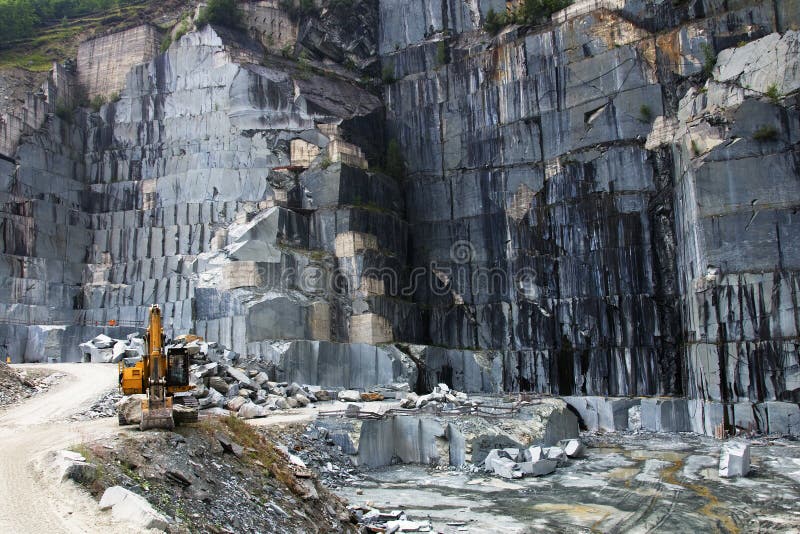Unearthing the Rich History and Lasting Practices of Granite Quarrying
As we base on the precipice of revealing the complex tapestry of granite quarrying, a journey with time reveals not simply the physical act of drawing out stone yet likewise the cultural and historic relevance woven into the really textile of this practice. From the ancient beginnings that laid the foundation for contemporary quarrying strategies to the sustainable methods that are forming the future of this industry, each carve mark on granite surfaces informs a tale waiting to be discovered (granite quarries in south africa). The heritage of granite quarrying stretches far past plain removal; it is a testament to human ingenuity, durability, and the long-lasting appeal of this magnificent stone
Ancient Beginnings of Granite Quarrying
Dating back to ancient people, the technique of quarrying granite has actually been an essential part of human history and building innovation. The earliest proof of granite quarrying dates back to ancient Egypt, where enormous pyramids and complex sculptures were crafted from this sturdy rock. The Egyptians made use of primitive devices to extract granite blocks from quarries, showcasing the importance of this material in their monumental constructions.
Moving ahead in history, the Greeks also made considerable contributions to the quarrying of granite. The Greeks used granite in various architectural marvels, such as temples and sculptures, showing their ability in shaping and carving this hardy stone. The Romans further refined the techniques of quarrying granite, employing advanced devices like chisels and hammers to remove and form granite for their legendary frameworks.
With the centuries, the method of quarrying granite has evolved, with modern-day innovations improving effectiveness while maintaining the timeless allure of this all-natural stone - granite quarries in south africa. From ancient human beings to modern building contractors, the tradition of granite quarrying continues to shape our globe
Development of Quarrying Methods
The development of quarrying techniques has actually been noted by a constant development towards better efficiency and accuracy in removing granite. Early quarrying techniques entailed manual labor with fundamental devices such as chisels, hammers, and wedges to draw out granite blocks from the planet.
In more current times, the advent of equipment revolutionized the quarrying market, making it possible for faster removal prices and enhanced performance. Technologies such as ruby cable saws, high-pressure water jets, and pneumatically-driven drills have ended up being basic in modern-day quarries, permitting specific cutting and reduced waste. Improvements in computer-controlled tools and 3D modeling have enhanced quarrying procedures, leading to minimal environmental effect and boosted sustainability techniques. As the demand for granite remains to increase, the advancement of quarrying strategies remains essential to conference industry needs efficiently and sustainably.
Social Significance of Granite
Granite holds an extensive cultural significance throughout numerous people due to its enduring existence in architectural work of arts and admired monuments. The social importance of granite extends past its physical qualities; it symbolizes durability, stability, and eternity, making it a sign of withstanding traditions and customs.

Lasting Practices in Quarrying
Amidst the rich background of granite quarrying and its cultural significance exists an expanding emphasis on lasting techniques within the market. As environmental recognition and problems concerning source exhaustion have actually enhanced around the world, the quarrying industry has significantly accepted lasting techniques to decrease its effect on the setting and bordering communities.

In addition, reclamation and rehabilitation of quarry sites post-extraction are integral to sustainable practices. By bring back quarried areas to an all-natural or useful state, such as creating wild animals habitats or leisure areas, quarriers can balance out the environmental footprint of their procedures and add positively to the local community.
Legacy of Granite Quarrying
With a historical background soaked in craftsmanship and commercial progression, what withstanding effect has granite quarrying left on the landscape of modern culture? The tradition of granite quarrying transcends mere removal methods; it has formed architectural wonders, metropolitan landscapes, and cultural heritage worldwide. The durable nature of granite has actually made it a favored choice for monoliths, buildings, and infrastructure, standing as a testimony to the skill and artistry of quarry employees across generations.
In addition, the financial footprint of granite quarrying can not be forgotten. The market continues to give employment possibility and drive neighborhood economic climates in regions where granite removal prevails. It has actually likewise spurred technical improvements in quarrying strategies and devices, leading to a lot more efficient and lasting practices.
In terms of sustainability, the heritage of granite quarrying consists of efforts to alleviate ecological impacts with improvement tasks and responsible resource administration. By stabilizing financial interests with environmental stewardship, the market makes every effort to ensure that future generations can remain to great post to read take advantage of this long-lasting all-natural resource.
Conclusion

Comments on “Checking Out Granite Quarries in South Africa: A Comprehensive Overview”